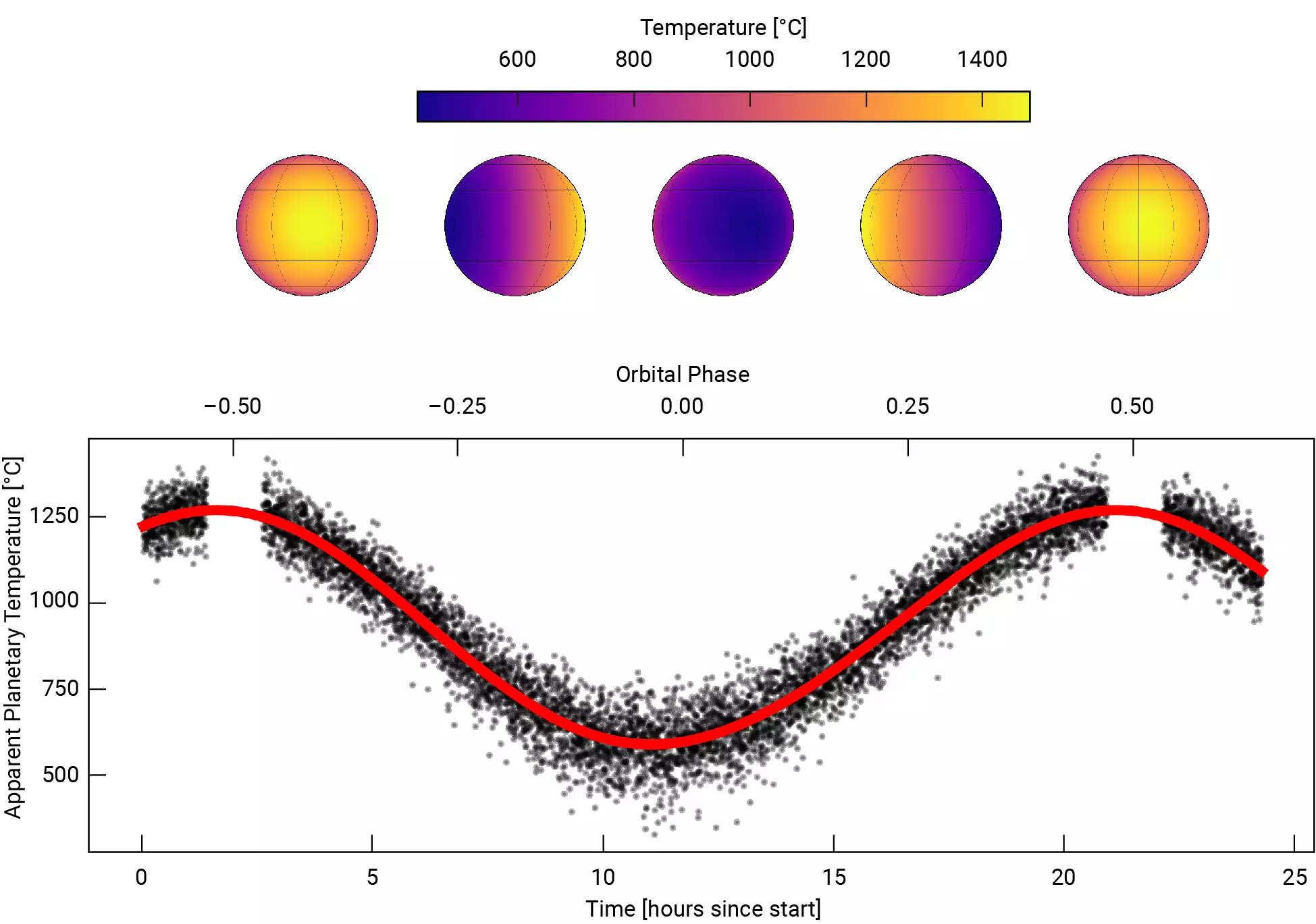In brief: WASP-43b, a massive gas giant exoplanet, makes Venus look like an ice cube. Thanks to some new observations from the powerful James Webb Space Telescope, astronomers have constructed the first global temperature map of this oven-like world – and the picture it paints is mind-boggling.
WASP-43b orbits so close to its parent star that the same side of the planet always faces the star’s blinding glare: just 1.3 million miles from the star’s surface. The dayside hemisphere gets absolutely baked, with temperatures soaring up to a ludicrous 1,250°C (2,282°F). That’s hot enough to melt some metals.
Meanwhile, the permanent nightside is a bit “cooler” at a relatively brisk 600°C (1,112°F). The infrared data from Webb’s mid-infrared instrument (MIRI) essentially acted like a powerful thermometer measuring the planet’s temp from 280 light-years away.
This intense heat disparity between the two halves drives stupendously fast winds screaming from one side to the other at over 9,000 kph (5,592 mph). That’s over 25 times faster than the worst hurricanes on Earth. These blistering gales make the atmosphere incredibly turbulent and choppy.
The Webb data also revealed the planet’s nightside is shrouded in a thick layer of clouds high up in the atmosphere, unlike the dayside which is cloud-free. The exact composition of these clouds is still unknown, but they are unlikely to be water clouds like on Earth or ammonia clouds like on Jupiter, as WASP-43b is far too hot for those compounds to condense. Instead, the researchers note that clouds made of rocks and minerals are more likely present at these extreme temperatures, possibly consisting of liquid rock droplets.

To determine WASP-43b’s atmospheric makeup, the team analyzed its spectrum – the infrared light decomposed into separate wavelengths. Different elements absorb and emit light at characteristic wavelengths, leaving telltale fingerprints that reveal their presence. This technique allowed the astronomers to identify specific compounds comprising the planet’s atmosphere.
Hubble could previously only study the dayside. But Webb’s higher sensitivity allowed the scientists to map temperatures and detect composition all the way around the planet.
Weirdly, the planet showed no signs of methane – a compound that should be plentiful on “hot Jupiter” from cooler nightside reactions between hydrogen, carbon monoxide, and water. The astronomers attribute this to the extreme winds, which whip air masses too quickly across the nightside for methane-producing reactions to occur significantly before reaching the destructive dayside heat again.
“With the new observing power of JWST, WASP-43b has been unveiled in unprecedented detail,” said Laura Kreidberg, Director at the Max Planck Institute for Astronomy (MPIA) in Heidelberg, Germany. “We see a complex, inhospitable world, with furious winds, massive temperature changes, and patchy clouds likely made of rock droplets. WASP-43b is a reminder of the vast range of climates that are possible on exoplanets and the many ways in which Earth is special.”
WASP-43b is certainly an extreme alien world, with little in common with anything in our solar system
Masthead credit: T. Müller (MPIA/HdA)










